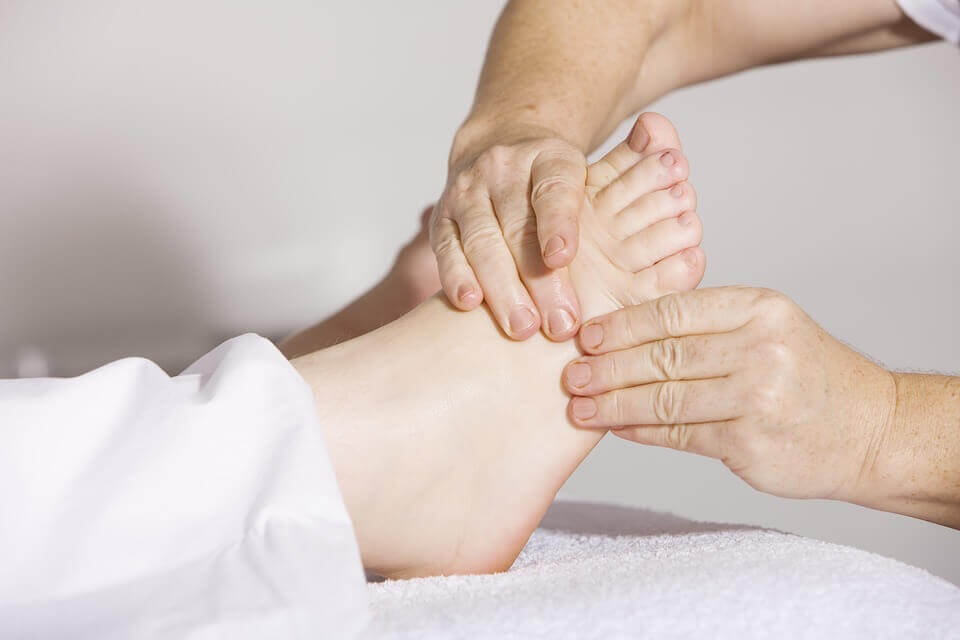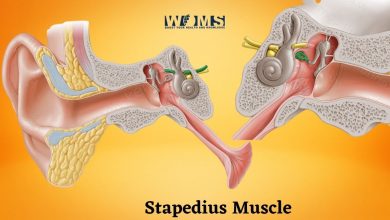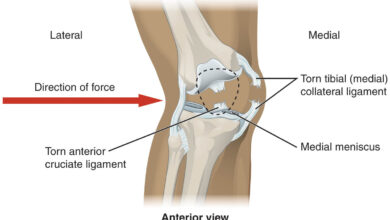Physiotherapy for Back pain

Physiotherapy is a type of treatment that helps improve the movement and function of joints and muscles. If you have back pain, physiotherapy for back pain can help reduce it and return to normal mobility.
physiotherapy for back pain can also help you make changes that reduce the chances of hurting your back again. Physiotherapists use a wide range of treatments and techniques to help with back pain and also offer tips for taking care of your back.
Why should you need physiotherapy?
If you have back pain or low back pain that is causing you serious problems or that does not seem to improve after a few weeks, it may be worth consulting a physical therapist for physiotherapy for back pain.
Physiotherapy for back pain can be useful for various types of back pain like lower back pain, lumbar pain, Sprain, and spinal stenosis. You can help with the following.
- lumbar pain: it is the back pain in which a specific cause has not been identified (such as an underlying medical condition or a lesion). physiotherapy for back pain can be also used in lumbar pain.
- Sprain: This is a pain that extends from the back to the legs; It can be caused by a prolapsed disc. A prolapsed disc is when a disc in the spine protrudes from its normal shape and presses on a nerve. Back pain caused by ageing of the discs in the spine (degenerative disc disease). physiotherapy for back pain is also used in sprain pain.
- Spinal stenosis: Spinal stenosis is when the space around the spinal cord narrows, putting pressure on the spinal cord. physiotherapy for back pain can be also used in a spinal stenosis.
Your family doctor can direct you to a physiotherapist or you can make an appointment yourself.
Your family doctor or physiotherapist can recommend physiotherapy as part of a treatment package that includes physiotherapy exercises for low back pain programs, painkillers and psychological support.
Having a combination of treatments like this can give you the best chance of getting rid of back pain.
Physiotherapist, osteopath or chiropractor?
Pchiropractors and osteopaths are health professionals who treat back pain with manual therapies, but their treatment approaches are slightly different.
Physiotherapists focus on restoring the movement and functionality of their entire body after having suffered a disease or injury. They look at how nerves, muscles and bones in your body are affected, and how exercise therapy and manual therapies can help. They will encourage you to take an active part in your rehabilitation, rather than relying on passive treatments.
Osteopaths analyze the health of your body as a whole and try to make sure that all your bones, muscles and joints work perfectly together. They focus on manual therapies to return the body to a state of balance.
Chiropractors have a specialized interest in neck and back pain. They observe your body as a whole and how problems with your bones, muscles, and joints affect the nervous system and overall health.
Their goal is the manipulation of the spine, but they can also use other techniques. The type of professional you see is your choice, but if you are looking for an NHS treatment, it will depend on the services available in your area.
If you are booking a private treatment, think about what you expect from the therapy and what is approach attracts you most. It may be worth getting in touch with some different professionals to discuss the circumstances. If you have health insurance, contact your insurance provider to see what it could be covered for.
What will happen when you see a physiotherapist?
When you see a physiotherapist for the first time, they will take a detailed medical history. You will be asked questions about any medical condition you have, your lifestyle and all the medications you take. They also want to know what symptoms you are experiencing and what triggers them.
Next, they will do a detailed physical exam, which includes how you move and how your back works. They can also perform a neurological evaluation to see how the nerves work.
You may need to remove some of your outer clothing when you do physical therapy so that the physical therapist can see and feel your back. You can request to have a companion if you prefer to have one with you.
Your physiotherapist will explain what treatment tips and how you hope this can help your back pain. They should also warn you about any potential treatment risks.
It is important to fully understand what your physiotherapist proposes because you will be asked to sign your consent to proceed with the treatment.
Physiotherapy exercises for lower back pain
Most people experience lower back pain at some point in their life. lower back pain is common in old age. you are prescribed for bed rest for your lower back but when you do visit the physiotherapist, he/she may prescribe you the following physiotherapy exercises for lower back pain:
Active therapy
Active therapies are the best physiotherapy exercises for lower back pain and movements that you do yourself. They are the most important part of any treatment.
In general, staying active in any way is better for back pain. Exercises can help improve flexibility, mobility, and strength in the lower back. A physiotherapist can advise you exactly which exercises are right for you and how to perform them.
Below, we include a general description of the different types of physiotherapy exercises for lower back pain that can be presented.
Aerobic Exercise
This is an exercise that sets it in motion and increases the heart rate. It is the most important part of physiotherapy for back pain which is included in the treatment program.
Aerobic exercise can help with any stiffness you may have and will keep you moving. It will also help you control your weight and can also improve your well-being.
Your physiotherapist will probably recommend low-impact aerobics, to begin with; These include walking, swimming and using stationary bikes and step machines.
They will encourage you to do as much as possible. Generally, you will be advised to do aerobic exercise for 20-30 minutes, up to 5 times a week. But you may have to start with shorter activity periods.
Stretching Exercises
The goals aim of stretching exercises is to improve the flexibility of the spine and reduce any tension in the muscles that support the spine.
It is likely that you will be asked to do this every day. A typical stretching exercise is to lie on your back and pull your knees towards you to gently stretch your back.
Or you may be asked to stand up and lean forward to stretch the hamstrings at the back of your legs. This physiotherapy for back pain can reduce stress in the lower back.
Strengthening Exercises
Exercises that aim to strengthen the central muscles can sometimes be part of the back pain exercise programs. The central muscles are the abdominal muscles around the stomach, the back muscles and those around the pelvis. These exercises can be useful in the short term. However, there is growing evidence that basic exercises do not appear to be more beneficial than general long-term exercises. Therefore, this type of exercise may not be something the physiotherapist focuses on. Being active in general is more important.
Manual therapies
Your physiotherapist can also suggest that you try one of the following manual techniques (“hands-on”). This will always be combined with an exercise program. Mobilization. During the mobilization, the physiotherapist will use slow and delicate movements to lengthen the spine. Your goal is to bring your back to your normal range of motion. Handling. During the manipulation, the physiotherapist will perform a faster push action with his hands at a specific point of the spine. You may hear a “pop” sound when they do it. In the past, physiotherapists offered other treatments, such as transcutaneous electrical nerve stimulation (TENS) and acupuncture. However, these treatments are not recommended in back pain guidelines because there is limited evidence of how useful they are. You should not offer these treatments now. Massage is another therapy in which there is little evidence of how well it works. It is usually not recommended for the treatment of low back pain.
What to expect after physiotherapy session?
At the end of the first session, your physiotherapist will usually tell you how many sessions you will need and how often you will need them. This will depend on how much your back pain is affecting you and how you manage your symptoms. You may only need unique counseling or can recommend a physical therapy appointment course for several months.
Your physiotherapist will also give you some tips on what you can do at home to relieve back pain. This can include things like how to improve posture and how to make sure the car seat or office chair is properly adjusted. P
Physiotherapy for back pain will only be a part of the treatment for back pain. Making lifestyle changes and staying as active as possible, as well as completing any other treatment you receive, will help you improve faster. It also means that there is less chance of back pain returning.
How can the physiotherapy for back pain help you?
If back pain lasts for more than a few weeks, an exercise program with a physical therapist can provide relief and get you moving again. Even manual therapies, such as manipulation and mobilization, have proved useful.
Pain relief and improvement in physical therapy can last long enough to get back to normal activities. Staying active is best for back pain. You can get back to work faster, you are less likely to have long-term problems and you are less likely to have back pain again.
It is difficult to get good proof of specific back pain exercises. One type of exercise is not thought to be better than another. Your physiotherapist will evaluate what they think will work best for you and your particular problem.
Your family doctor or physiotherapist can assess how back pain affects you using a questionnaire to make sure you receive the most appropriate treatment. There is some evidence that people who have been evaluated in this way can get the maximum benefit from physiotherapy.
Are there any side effects of physiotherapy for back pain?
It is possible that some physiotherapy exercises or physiotherapy for back pain and movements worsen back pain. Your physiotherapist should monitor this and show you which exercises to avoid and which will help you relieve pain.
These are usually not serious and last only a short time. For example, you may experience stiffness or discomfort in the area where you received treatment. It is possible that handling may cause more serious injuries, but this is very rare.
Your physiotherapist should tell you about the risks of manual therapies before performing any treatment or physiotherapy for back pain. Your physiotherapist should also check how you feel when you are practicing therapy and stop if you feel pain or discomfort.




